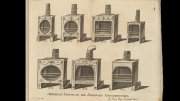The population explosion, fulfilling a longtime FAS goal ahead of schedule (the plan had been 700 by 2010), has at least three significant consequences. First, the disciplinary mix is shifting, with the Division of Engineering and Applied Sciences’ ranks up 40 percent in the past decade, far outpacing growth in other areas; life sciences remains flat, despite recruiting. Second, the faculty is slightly less gray: in 1999, 431 members were tenured, and just 172 were in the junior ranks (29 percent); now, the mix is 480 to 220 (more than 31 percent relative youngsters). Third, FAS is bursting at the seams.

In a September 23 letter, its dean, William C. Kirby, wrote that the growth had been more rapid than “anticipated in our academic and financial planning.” In light of what President Lawrence H. Summers characterized as “serious budget challenges” given the faculty expansion and associated building projects, FAS is applying the brakes, hoping to shift down to a “sustainable pace,” Kirby said, while still pursuing growth to a new target of 750 faculty members by 2010, and more beyond.





